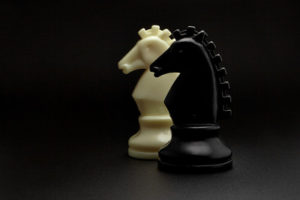 Horse racing is certainly a big deal here in Britain, with the “Sport of Kings” consistently ranking behind only football as the nation’s most popular spectator sport. No doubt part of this mass appeal comes from the variety on offer, with British racing providing an incredibly high standard across both arms of the sport; namely those of flat and jumps racing.
Horse racing is certainly a big deal here in Britain, with the “Sport of Kings” consistently ranking behind only football as the nation’s most popular spectator sport. No doubt part of this mass appeal comes from the variety on offer, with British racing providing an incredibly high standard across both arms of the sport; namely those of flat and jumps racing.
The two branches have in common that they each pit horse and jockey against their rivals in a race for the finish line. However, there are also many differences between the two versions of Britain’s premier equine entertainment. It is those differences to which we turn our attention here; from the differing seasons, the distances over which the races are run, the types of horses who take part in each sphere and more besides.
The major difference between the two branches of this great sport is of course all too obvious, so we might as well get it out of the way first. Flat races feature no obstacles, whilst jumps racing – commonly known as National Hunt – features either fences or hurdles which the contenders must negotiate as part of the course. The one exception to this being the National Hunt Flat races (also known as Bumpers) which make up only a very small part of the “jumps” racing programme. With that hopefully self-explanatory difference out of the way, let’s now take a look at some of those variations which may not be so obvious – at least to those who are perhaps new to the sport.
Race Distances
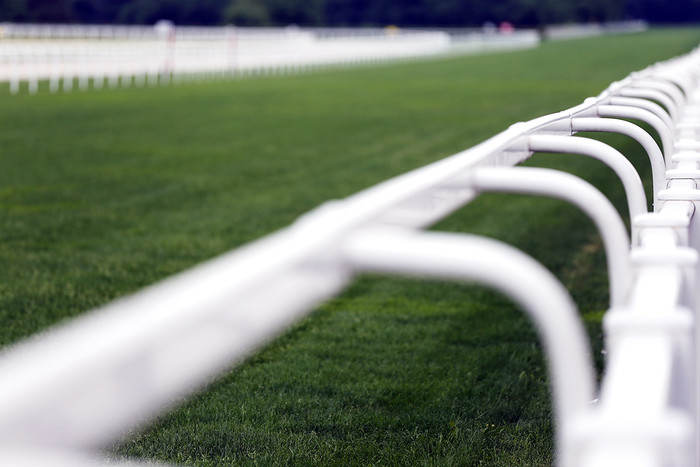
Looking first at flat racing, at the lowest of the scale we have the sprint distances of 5f (five furlongs) and 6f, moving up through the specialist 7f and 1m (one mile) trips, followed by the middle distances of 1m2f and 1m4f, with anything at 1m6f and above being considered a stayers’ event.
The majority of flat racing’s major events – including four of the five Classics – fall into the specialist and middle distance categories. Contests at 2m and above are in the minority in the flat racing sphere, with the longest event of the season being the Queen Alexandra Stakes at Royal Ascot over a trip of 2m5½f.
Whilst at least some degree of speed is in demand in the majority of flat races, National Hunt racing places far more emphasis upon stamina, with both hurdle and chase contests beginning at a minimum trip of around 2m. Hurdle events then extend up to a maximum of around 3m, with Chases going all the way up to the longest race of the season – the marathon that is the 4m2f Grand National. For those races that blur the flat and National Hunt lines, i.e. ‘Bumpers’ the trip is almost always 2m.
Race Starts
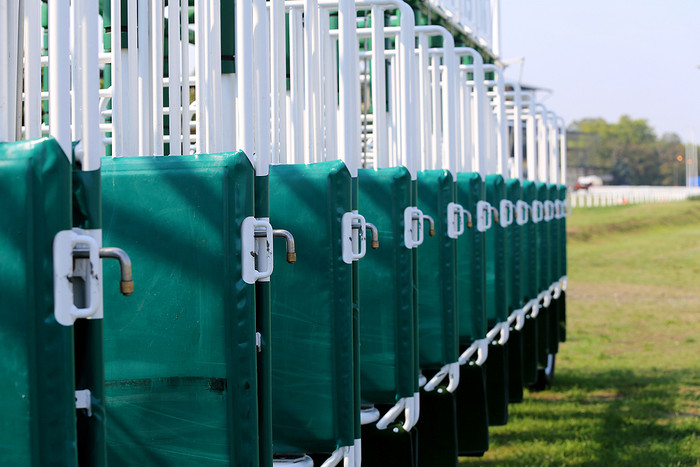
One immediately noticeable difference between flat and National Hunt racing comes right at the start, with the two spheres using two very different methods to get the action underway.
In flat racing, all runners go into numbered starting stalls, with the exact stall for each runner being determined by a pre-race draw. Low drawn runners are on the inside of the track with the numbers then ascending towards the stall positioned more towards the outside of the course. Once all of the horses are in their requisite starting stalls, the signal is given for the race to begin and all stalls open in unison.
In contrast, jumps races utilise what is known as a flip start. In this method, an elastic tape is stretched across the track and the runners are required to approach the starting line in a slow and orderly manner. If the starter is happy that the runners are advancing correctly, he drops his flag, the starting tape is released and the race begins. If, however, the runners do not begin the contest satisfactorily (e.g. running through the tape before it is released or approaching the line too quickly), they will then be called back and required to line up evenly across the track and begin from a standing start once the flag is dropped.
Types of Horses
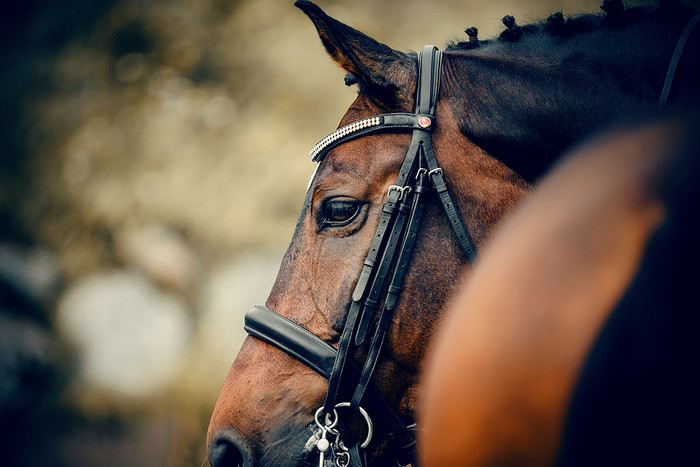
Given the very different demands placed upon the runners in each of the two spheres, it comes as no real surprise to learn that the attributes required for success in flat racing are rather different from those necessary to prevail in a stamina-sapping jumps contest. There are of course those runners who thrive under both codes, with contenders from the top National Hunt yards often switching successfully between staying flat contests and jumping events. With that caveat aside, what type of runner can we generally expect to find in flat races and over the jumps?
Flat Racehorses
In general, flat runners are more athletic in appearance than their National Hunt counterparts and tend to be able to demonstrate more speed – be that consistently throughout the race, or with a late turn of foot. Again, generally speaking, the shorter the trip, the more muscular the performer, with the horses becoming lither as the distances increase, in a manner not dissimilar to that seen when comparing a human sprint athlete to a long-distance runner.
Flat horses are invariably specifically bred for racing on the flat, utilising proven flat racing breeding lines, except over the extreme, longer distances, where runners with more of a National Hunt pedigree can be expected to do well.
Flat runners most often begin their careers at two years of age and they are not permitted to race before this point. Still developing physically at this stage in their career, runners generally do not reach their peak until between the ages of three and five, with the five British Classic’s being restricted to three year old runners. Success at the highest level during this peak window of ability will generally result in the best colts being retired from the track to begin an often lucrative career at stud. A game for younger horses, it is unusual to see flat performers race much beyond their eighth birthday, although there are of course exceptions.
National Hunt Racehorses
In comparison with the flat runners, those who ply their trade in the National Hunt sphere tend to be larger, more robust and endowed with the necessary stamina to compete over the longer distances. Relative to the flat, the National Hunt pool of horses features more of a diverse mix, containing runners bred specifically for jumps racing from established National Hunt stallions, together with those who have perhaps switched to jumps following a career on the flat.
National Hunt horses commonly begin their careers in bumper races or novice hurdles and tend to hit the track later than their flat counterparts. No runner is permitted to take part in a National Hunt contest prior to their third birthday, and most jumps horses don’t take to the track until the age of four or five.
Whilst many runners remain racing over hurdles throughout their careers, those who display a particular aptitude for jumping will progress to chasing and tackle the stiffer and larger fences, with many of the biggest races in the sport – including the Aintree Grand National and Cheltenham Gold Cup – taking place in this sphere.
On average, National Hunt runners enjoy a longer career than the flat performers, often racing on into double figures and reaching a peak between seven and 10 years of age. This fact of seeing many of the same stars return to the track year after year is one of the major aspects which helps the public develop a bond with the runners, and it is National Hunt racing that often produces the most emotional and enduring moments of the season.
One final thing to note about runners over the jumps is the distinct lack of colts, with the overwhelming majority of male runners being gelded before embarking upon a National Hunt career. Colts are notoriously difficult to train over obstacles due to their headstrong nature and benefit from the more even temper and relaxed attitude resulting from the gelding procedure. From an owner’s and breeder’s perspective, there is also far less of a downside in terms of foregoing commercial value, as it is the stallions to have graduated from flat racing who dominate the breeding world.
Courses

So, the distances over which the races are run differ between flat and jumps, as do the types of runner, but what about the racecourses?
As a whole, Britain is home to 59 of the most varied tracks to be found anywhere on the planet; left-handed or right-handed, flat or undulating, straight or twisting and turning, British racing just about has it all. Of those 59 courses, 19 are flat only affairs, 23 are dedicated solely to National Hunt racing and 17 provide both flat and jumps.
The vast majority of British racing is held on turf, but there are also six tracks who offer flat all-weather racing, i.e. racing held on a synthetic surface that is more able to withstand the rigours of the British wintertime. These venues are highlighted with the (AW) suffix in the lists below.
More details on all British racecourses can be found here.
Flat Only Racecourses
Being based in the heart of Britain’s major training centre, and the stage upon which the first two Classic contests of the season are run, it is Newmarket which is considered to be the traditional home of the flat racing game. There are plenty of other standouts amongst the flat only tracks though, from the delights of York in the north to the home of the Derby that is Epsom in the south, and plenty more in between.
- Northern England – Beverley, Chester, Pontefract, Redcar, Ripon, Thirsk, York
- Southern England – Bath, Brighton, Chelmsford City (AW), Epsom Downs, Goodwood, Great Yarmouth, Newmarket, Salisbury, Windsor
- Midlands – Nottingham, Wolverhampton (AW)
- Scotland – Hamilton Park
National Hunt Only Racecourses
The National Hunt only tracks outnumber the flat venues by four and offer the same kind of variety; from the small countryside venues of Cartmel or Hexham, to the giants of Aintree, which of course stages the Grand National, and Cheltenham and its magnificent four day March festival which acts as the championship level centrepiece of the season.
- Northern England – Aintree, Cartmel, Hexham, Market Rasen, Sedgefield
- Southern England – Cheltenham, Exeter, Fakenham, Fontwell Park, Huntingdon, Newton Abbot, Plumpton, Taunton, Wincanton
- Midlands – Hereford, Ludlow, Stratford-on-Avon, Uttoxeter, Warwick, Worcester
- Scotland – Kelso, Perth
- Wales – Bangor-on-Dee
Flat and National Hunt Racecourses
Finally, we have those courses that are in the fortunate position of being able to offer a little bit of both. Wetherby became the most recent track to join this party, when staging its first flat fixture in 2015, and joins some pretty big names, including the home of the King George, Kempton, and the setting for the world-renowned Royal Meeting, Ascot.
- Northern England – Carlisle, Catterick, Doncaster, Haydock, Newcastle (AW Flat), Wetherby
- Southern England – Ascot, Kempton, Lingfield (AW & Turf Flat), Newbury, Sandown
- Midlands – Leicester, Southwell (AW Flat)
- Scotland – Ayr, Musselburgh
- Wales – Chepstow, Ffos Las
Seasons

Traditionally flat racing has represented the summer version of the sport, with the quicker ground enabling the runners to display their speed and turn of foot. Winter was then National Hunt’s time of year, with the generally softer conditions bringing stamina more into play, as well as being kinder on the horses in the event of a fall.
That historical summer/winter split does still broadly hold true but relatively recent innovations such as all-weather flat racing, which began in 1989, and summer jumping which first appeared in 1995 mean that both flat and National Hunt racing can be found to some degree almost throughout the year. That said, both branches of the sport do still have their defined seasons.
Flat Season
The flat season officially gets underway with the Lincoln Handicap card at Doncaster in late March/early April and concludes at the November Handicap meeting at that same South Yorkshire venue. Standout events are peppered throughout the flat racing year, including the 1,000 and 2,000 Guineas meeting at Newmarket in late April/early May, The Epsom Derby on the first Saturday in June, Royal Ascot also in June, Glorious Goodwood in late July/Early August and the St Leger in September. The flat turf action then draws to a close from November through to April, after which point the all-weather tracks – which have their own season and championships – keep things ticking over for flat fans throughout the winter months.
National Hunt Season
Whilst it is still recognised as a predominantly winter sport, the National Hunt season actually begins at the start of May, only a few days after the culmination of the previous campaign. Up until 1995, the jumpers enjoyed an eight-week break in June and July, but this gap has now been filled by the summer jumping programme. As welcome as they are to National Hunt enthusiasts, the early season fixtures are generally low-level affairs and, whilst counting towards the trainers and jockeys championships, they don’t tend to make many headlines.
It is not until late October/early November that the season really begins to click into gear, with the Charlie Hall meeting at Wetherby signifying the point at which the championship-calibre runners make their return and the major handicaps of the season begin to appear on the fixture list. The season then runs through to the end of April, with the Bet365 Gold Cup meeting at Sandown being the last major meeting on the programme.
Unlike the flat season, with its steady stream of top-quality events, the National Hunt season steadily builds to the crescendo that is the Cheltenham Festival in March. It is at this meeting where the reals stars of the season are crowned.
Prize Money Levels
![]() Being held during the summer months, and featuring glamourous fixtures such as the Epsom Derby meeting and the international spectacle that is Royal Ascot, it is flat racing which is widely viewed as being the more affluent of racing’s two disciplines. And when we look at the respective levels of prize money in the two branches of the sport, it turns out that this is a perception which is largely true, at least on a global scale.
Being held during the summer months, and featuring glamourous fixtures such as the Epsom Derby meeting and the international spectacle that is Royal Ascot, it is flat racing which is widely viewed as being the more affluent of racing’s two disciplines. And when we look at the respective levels of prize money in the two branches of the sport, it turns out that this is a perception which is largely true, at least on a global scale.
Taking a look at the respective global leaders in each of the spheres serves to illustrate this point pretty well. With a hefty £1 million in total prize money on offer, Aintree’s Grand National is the richest jumps race to be held anywhere in the world. Impressive as that is, it is rather put in the shade by the $20 million (£14.25 million) available for flat racing’s Saudi Cup at Riyadh.
Domestically the figures aren’t quite so dramatic but do still show flat racing to be the more financially rewarding of the two disciplines. For purposes of comparison, the 2019 Epsom Derby offered £1.5 million, compared to the £1 million available in the 2019 Grand National, whilst £7.3 million was shared by the winners of all races at the 2019 Royal Ascot meeting, comparing favourably with the £4.59 million that was split amongst the Cheltenham Festival heroes in that same year. Those examples come from the very top levels of the sport, but do reflect a disparity that filters down from the upper echelons to the lower rungs of the racing ladder.
Handicapping and Weights
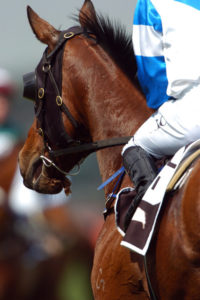 Happily, both flat and National Hunt racing operate using the same type of handicapping system. In both spheres, runners are assigned a handicap rating having either won a race or completed three races. This rating is a reflection of the perceived ability of the runner and operates on a scale of one rating point equating to one pound in weight.
Happily, both flat and National Hunt racing operate using the same type of handicapping system. In both spheres, runners are assigned a handicap rating having either won a race or completed three races. This rating is a reflection of the perceived ability of the runner and operates on a scale of one rating point equating to one pound in weight.
For example, were a 95-rated runner to meet a 90-rated runner in a handicap event, then the 95-rated horse would be required to carry five pounds more than the 90-rated runner to theoretically equalise each horse’s chances of winning. With the vast majority of contests, both on the level and over jumps, being handicap events, this system is crucial to the framing of races.
Whilst the method used in determining the relative weights to be carried is the same in both flat and National Hunt racing, the range of weights shouldered by the contenders does differ markedly. With flat racing being more about speed, lighter weights are beneficial, and weights range from a minimum of eight stone to a maximum of 10 stone. Due to the demands of the sport, National Hunt jockeys tend to be bigger and stronger on average than flat jockeys, a fact which is reflected in the weights carried by the runners, ranging from a minimum total burden of 10 stone to a maximum of 12 stone. In both flat and national hunt racing, the weight carried represents the total burden consisting of the jockey, the saddle, the weight cloth and so on.
More can be found on handicapping here.
Race Grades
When looking at the manner in which races are graded or classified, there are many similarities between flat and National Hunt racing, with the only real differences coming in the terminology used in the upper reaches of the grading systems.
In flat racing, the very best races, including the Classics and major events at Royal Ascot, are assigned Group 1 status, with Group 2, Group 3 and Listed coming next in terms of quality. In National Hunt, the championship events such as the Cheltenham Gold Cup and Champion Hurdle are labelled as Grade 1, followed by Grade 2, Grade 3 and Listed on the class ladder. The below tables display the full list of race classes, together with the common types of races to fall into each class.
Flat Racing Classes
| Class | Types of Race |
|---|---|
| Class 1 | Group 1, 2,3 and Listed and 96-110+ handicaps |
| Class 2 | 86-100, 91-105 and 96-110 handicaps |
| Class 3 | 76-90 and 91-95 handicaps |
| Class 4 | 66-80 and 71-85 handicaps |
| Class 5 | 56-70 and 61-75 handicaps |
| Class 6 | 46-60 and 51-65 handicaps |
| Class 7 | 0-45 handicaps |
National Hunt Racing Classes
| Class | Types of Race |
|---|---|
| Class 1 | Grade 1, 2, 3 and Listed |
| Class 2 | 0-140+ handicaps |
| Class 3 | 0-120 and 0-135 handicaps |
| Class 4 | 0-100 and 0-115 handicaps |
| Class 5 | 0-85 and 0-95 handicaps |
| Class 6 | Bumpers and Hunter Chases |
A more detailed look at horse racing grades can be found here.
Which Is The Better Bet?
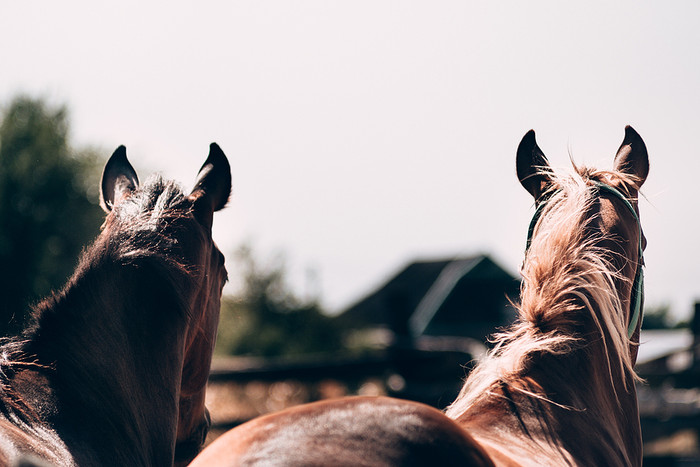
Whilst there are undoubtedly many racing fans out there who enjoy both flat and National Hunt racing from a purely sporting point of view, for others the action is enhanced by a financial investment on the result. With that in mind, which – if either – is the better branch of the sport to bet on? As with most things in life, there are arguments for both sides of this coin.
National Hunt fans will point to the sport having more established form lines as a result of the longer careers of the competitors, and it is hard to argue with this greater amount of data being an advantage over the flat. But then again flat racing does come without the added peril of having your selection fall when leading at the last!
The lack of obstacles is undoubtedly what attracts many to flat racing, whilst others are drawn in by the greater emphasis upon pedigrees and speed figures, areas which aren’t so prevalent in National Hunt Racing. The flat does also come with its perils though, with the still physically maturing two and three year olds often producing unforeseen and unpredictable jolts of improvement.
In our eyes, there is plenty to enjoy in watching and betting on both versions of the sport, with each having its pros and cons when it comes to unearthing that next winner. And the real beauty of racing is that just because you know the difference between the two spheres, it doesn’t mean that you must choose one over the other.
